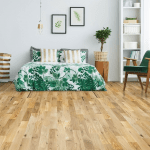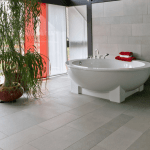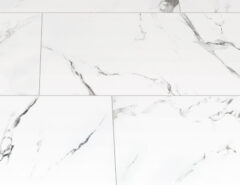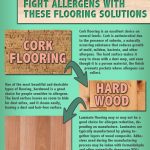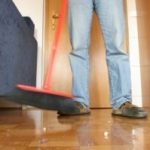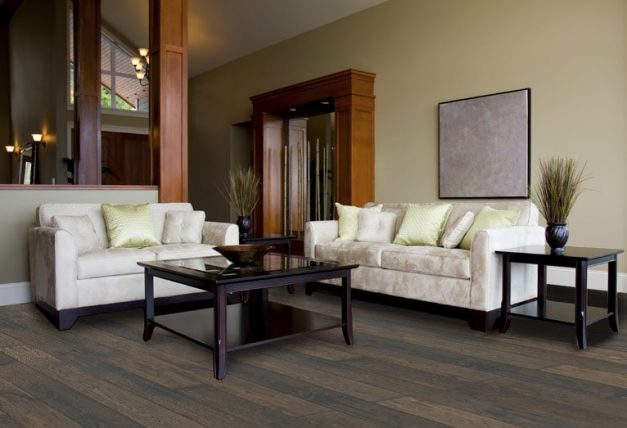
Are you considering prefinished hardwood for your upcoming project? If so, you’re not alone. Prefinished hardwood is simply hardwood flooring that is already sanded, sealed, and ready to install. After installation, the only thing left to do is sweep it up and call it a day. It’s no surprise that it’s such a popular flooring material.
However, before you dive in, it’s essential to look at the advantages and disadvantages of prefinished hardwood to determine whether it’s the best flooring for your project.
Pros of Prefinished Hardwood Flooring
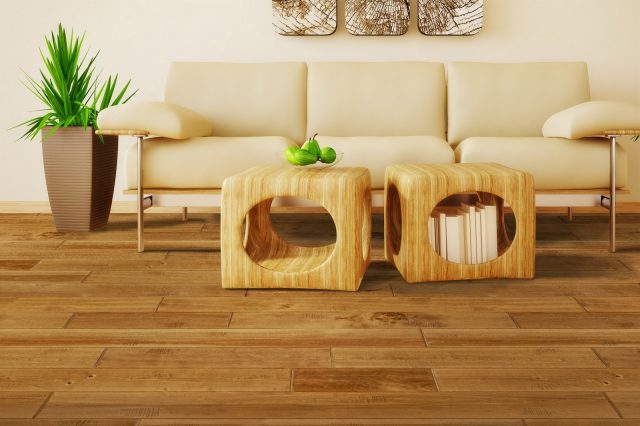
Unsurprisingly, this floor has plenty of advantages to win you over.
Beautiful Aesthetic
Prefinished hardwood is a beautiful flooring material. It’s hard wood, after all. It can come in various grains, colors, and stains to look great in almost any design aesthetic.
Uniform Protective Coating
The coating is applied pre-installation, so the protective coating is uniform and evenly applied. It’s also much thicker than what you could apply manually. Due to the protective seal, prefinished floors look great for many years.
More Availability
The popularity of prefinished hardwood floors makes it much easier to find prefinished hardwood than unfinished hardwood.
Zero Sanding
Sanding a hardwood floor is time-consuming and results in a lot of standing dust. Prefinished floors eliminate the hassle and time required for installing unfinished floors.
No Smell
Regular hardwood floors often require smelly chemicals to seal and protect them. That’s not the case with prefinished hardwood. You don’t have to worry about odors with prefinished hardwood since the seal is applied long before it’s installed.
Cons of Prefinished Hardwood Flooring
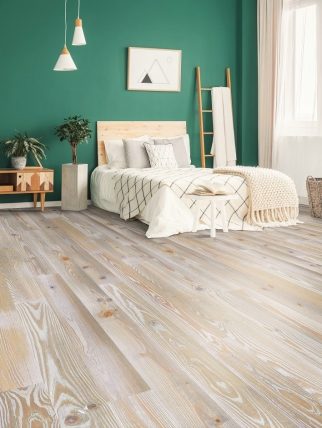
Installation Requires an Experienced Professional
Installing prefinished hardwood is very similar to installing regular hardwood. It requires special skills and tools to get it right. Installation is simplified with prefinished hardwood since there’s no sealing or sanding – however, it still requires an experienced professional.
Can Be Difficult to Refinish and Repair
If a prefinished floor gets dented, dinged, or scratched, it can be complicated (if not impossible) to repair. Often, if there’s an issue with prefinished hardwood, it’s best to replace the entire floorboard.
Refinishing is also challenging to do. Thankfully, prefinished floors don’t need refinishing very often, but when it does, you have to remove more than five layers of urethane finish to get to the wood, and that can be time-consuming and difficult.
Seams
The seams between the floorboards will be more noticeable and susceptible to damage with a prefinished hardwood floor. The individual floorboards come pre-sealed, so there isn’t usually a need to apply a seal after the fact. This can leave the seams open and susceptible to spills and damage.
How Prefinished Hardwood Compares to Other Materials
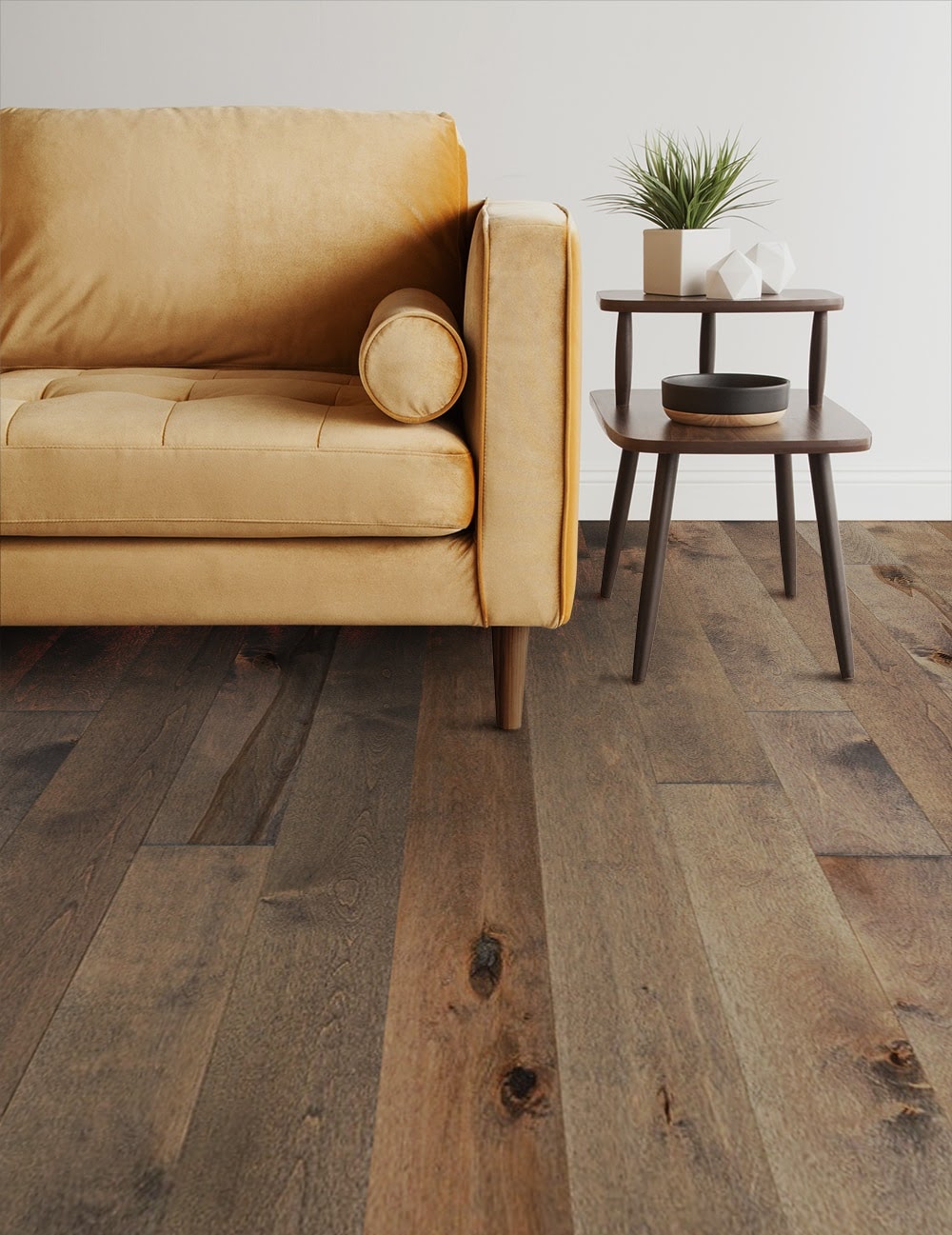
We’ve talked a bit about prefinished hardwood and how it compares to regular unfinished hardwood, but how does prefinished hardwood compare to other materials on the market?
Engineered Hardwood
Engineered hardwood and prefinished hardwood are different materials – though engineered hardwood can be prefinished. Prefinished hardwood is simply hardwood that has been coated with a urethane finish in the factory. Engineered hardwood consists of multiple layers of wood composite that are heated and glued together and topped with a thin veneer of wood. They’re relatively comparable materials in terms of cost, appearance, and durability.
The big difference is that prefinished wood is actually hardwood, whereas engineered wood is a composite material. The installation process is also different. For prefinished hardwood, you simply install and sweep it up. Even though engineered hardwood can come prefinished, it’s usually still a good idea to seal it – especially since it is typically used in more moisture-rich areas.
Vinyl
Vinyl plank flooring is a top choice for people who want durability and style. Vinyl can look like wood, but it isn’t actually wood at all. Vinyl flooring is a cost-effective, long-lasting, and durable flooring option that is suitable for both dry and wet areas. One of the top advantages of vinyl is that it’s water-resistant, and even waterproof in some cases.
Unlike prefinished hardwood, some vinyl planks are DIY-friendly, although professional application is usually still advised. Vinyl is usually much less expensive than prefinished hardwood, making it an ideal choice for people who don’t want to sacrifice on budget or style.
Laminate
Laminate is a water- and scratch-resistant flooring type that is popular with DIYers. It’s also appreciated for its low cost. Laminate can be a durable and long-lasting flooring type when properly installed. It comes in a variety of styles so that it can mimic the look of prefinished hardwood.
Like prefinished wood, laminate doesn’t require sanding or sealing. You just install it and sweep it up. In fact, experts warn against sealing laminate because it can destroy the protective coat that it is made with.
Upgrade Your Home with High-Quality Flooring
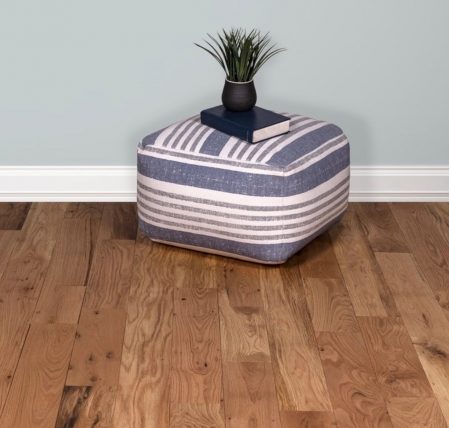
It’s easy to see why prefinished wood is such a popular flooring choice. Prefinished hardwood is essentially just hardwood, with less work on the installation and a little more durability.
If you’re looking for a more moisture-friendly, cost-effective option, vinyl planks, engineered hardwood, and laminate are terrific alternatives. Ultimately, you want to choose a high-quality flooring material that meets your needs and budget.
For access to exclusive deals, unlimited samples, and on-site delivery for all of your high-quality flooring, consider becoming a PRO Rewards member. It’s free, simple, and it only takes a few seconds to sign up. Become a PRO now!


